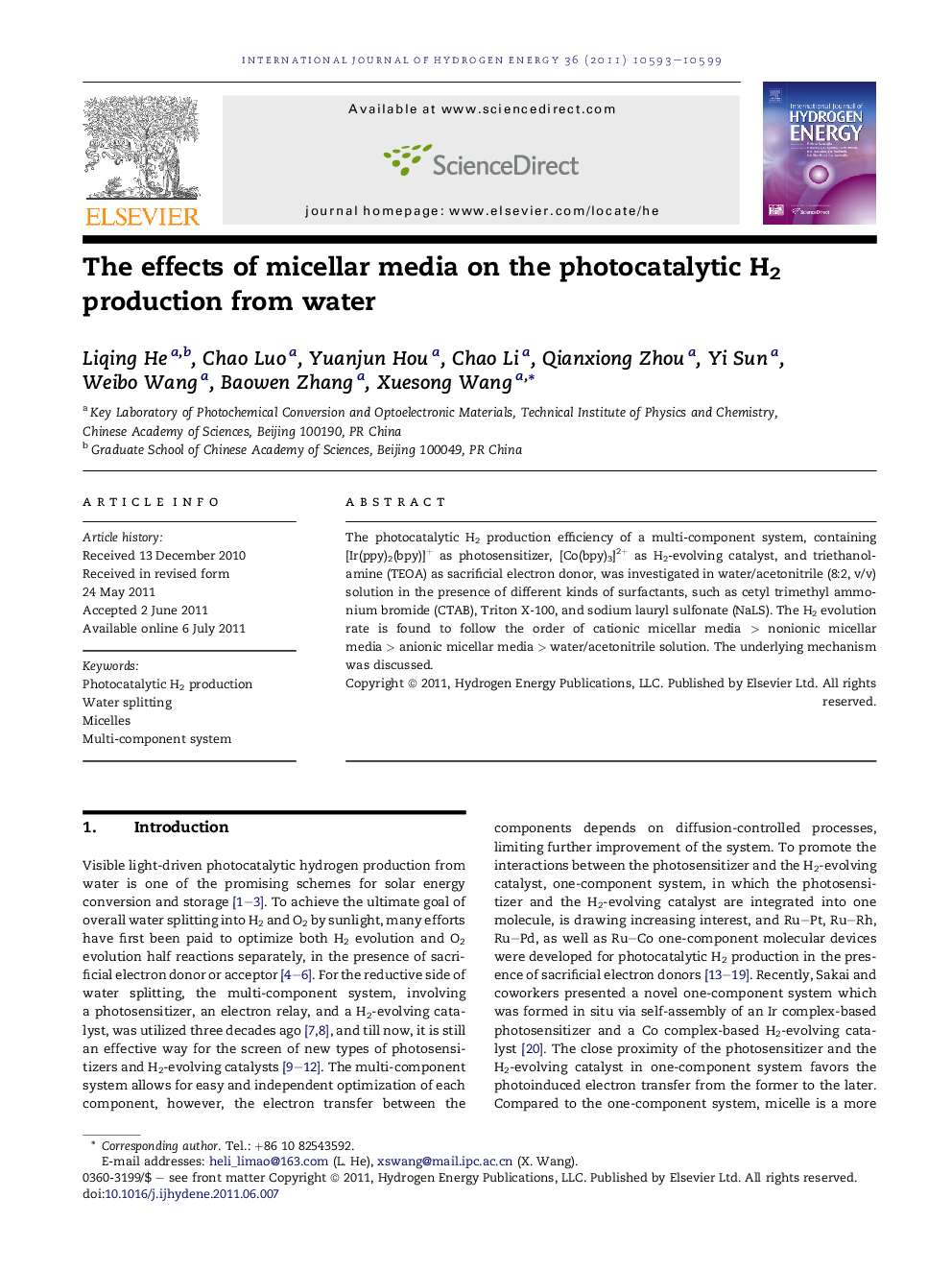| کد مقاله | کد نشریه | سال انتشار | مقاله انگلیسی | نسخه تمام متن |
|---|---|---|---|---|
| 1277526 | 1497576 | 2011 | 7 صفحه PDF | دانلود رایگان |

The photocatalytic H2 production efficiency of a multi-component system, containing [Ir(ppy)2(bpy)]+ as photosensitizer, [Co(bpy)3]2+ as H2-evolving catalyst, and triethanolamine (TEOA) as sacrificial electron donor, was investigated in water/acetonitrile (8:2, v/v) solution in the presence of different kinds of surfactants, such as cetyl trimethyl ammonium bromide (CTAB), Triton X-100, and sodium lauryl sulfonate (NaLS). The H2 evolution rate is found to follow the order of cationic micellar media > nonionic micellar media > anionic micellar media > water/acetonitrile solution. The underlying mechanism was discussed.
► The effects of micelles on the photocatalytic hydrogen production were examined.
► [Ir(ppy)2(bpy)]+ and [Co(bpy)3]2+ were used as photosensitizer and catalyst.
► The highest H2 evolution rate was obtained in cationic micellar media.
Journal: International Journal of Hydrogen Energy - Volume 36, Issue 17, August 2011, Pages 10593–10599